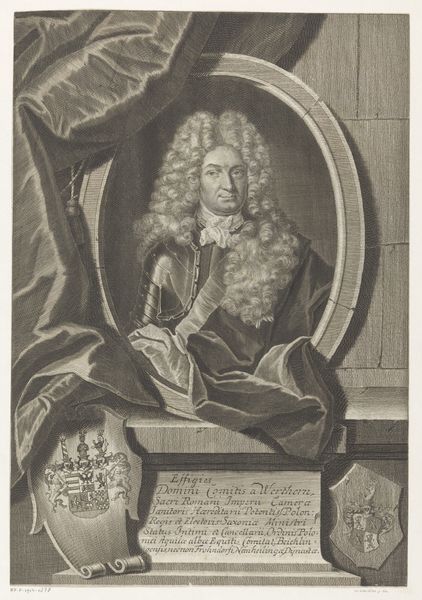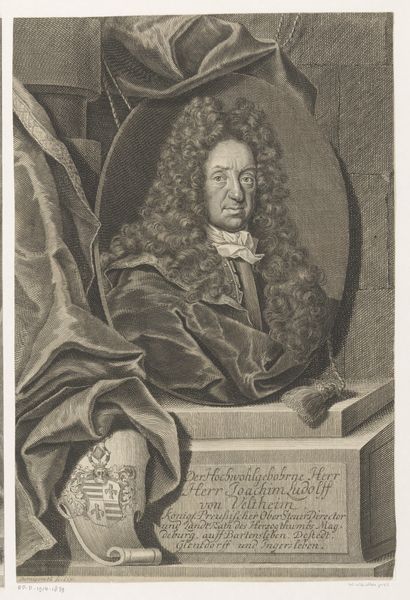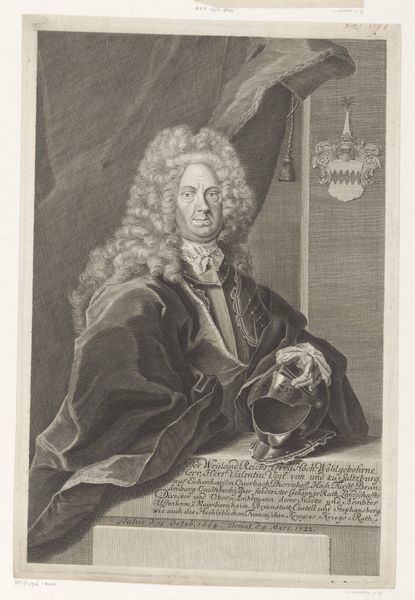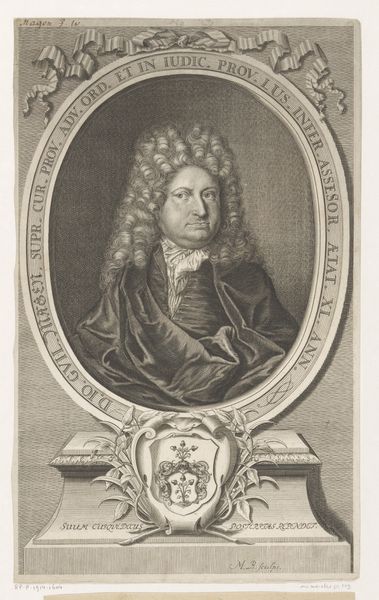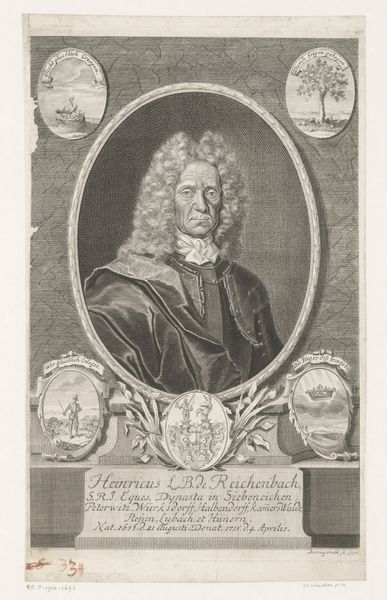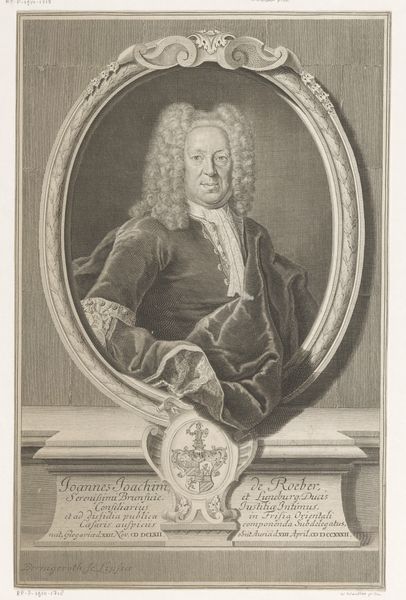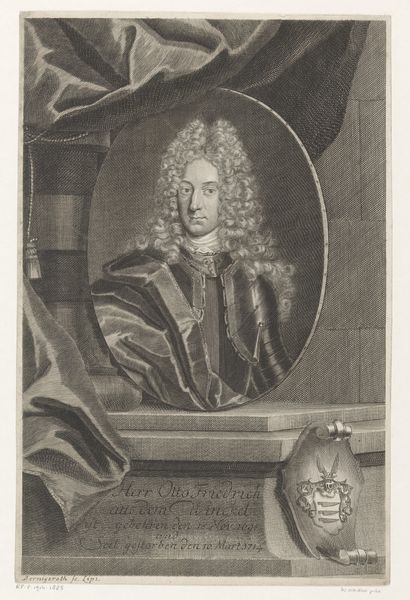
engraving
portrait
baroque
old engraving style
history-painting
engraving
Dimensions: height 411 mm, width 302 mm
Copyright: Rijks Museum: Open Domain
This print depicting Johann Christoph Schacher was made by Martin Bernigeroth, likely in the early 18th century, using engraving. This intaglio process involves incising a design into a metal plate, applying ink so that it fills the recessed lines, and then transferring it to paper under high pressure. Look closely, and you'll see the network of fine lines that create the portrait. The depth and density of these lines determine the tonal range and create the illusion of form. Engraving demands precision and control; Bernigeroth would have used specialized tools called burins to carve the image into the copperplate. The choice of engraving speaks to the values of the time. It was a reliable medium that allowed for the wide dissemination of images, serving both aesthetic and social purposes. The amount of skilled labor that went into this engraving also speaks to the patron's wealth and status. The print bridges the gap between the fine arts and craft.
Comments
No comments
Be the first to comment and join the conversation on the ultimate creative platform.
